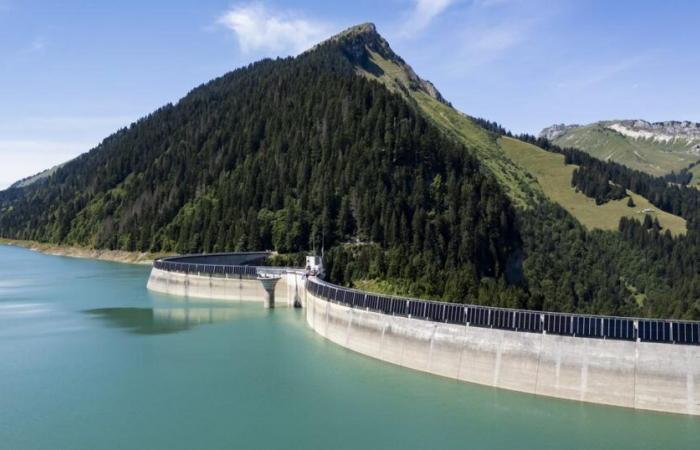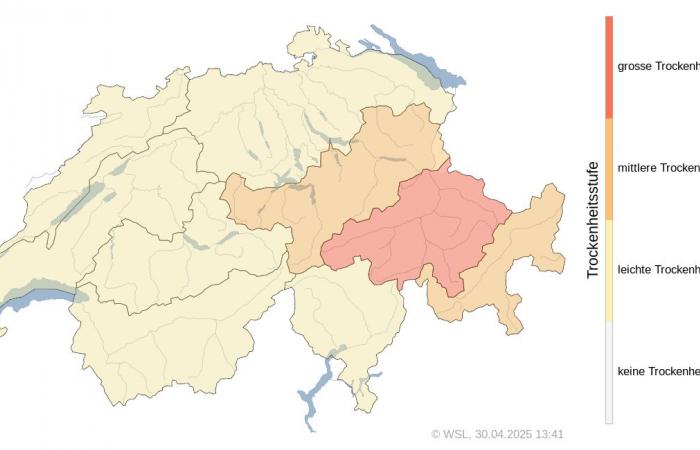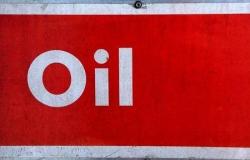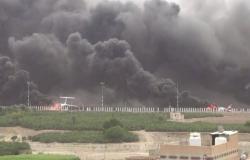The Alps glaciers represent an important reserve of water for Switzerland. Due to global warming and the melting of ice, the country could in the future lack water in summer. One of the solutions to this problem could be the construction of new dams.
Despite the abundant snowfall that paralyzed Valais in mid-April, precipitation was less abundant in Switzerland during the end of winter and early spring. Consequently, drought threatens in many regions of the country, in particular in the east, as shown in the information site drought.ch.
![Map of the situation in matters of drought according to the region in Switzerland; Yellow = moderate drought / orange = medium drought / red = large drought (condition on April 30, 2025). [DROUGHT.CH/WSL] Map of the situation in matters of drought according to the region in Switzerland; Yellow = moderate drought / orange = medium drought / red = large drought (condition on April 30, 2025). [DROUGHT.CH/WSL]](https://euro.dayfr.com/article/content/uploads/2025/05/04/daea730eac.jpg)
Corollary of the lack of precipitation, the levels of the dam lakes are currently lower than the average of recent years, according to Data from the Federal Energy Office (Ofen). And in view of the episodes of drought which become more and more frequent as well as the rapid cast of glaciers under the effect of global warming, this problem may arise more and more often.
In the medium term, these phenomena could threaten the security of water supply for population and agriculture. To avoid shortages, the question therefore arises of the opportunity to build new dams in the Alps. The objective would be to store a lot more water in order to be able to use it if necessary.
![Filling rate of accumulation basins in Switzerland in 2025, compared to the average and minimum/maximum of 2013-2021 years (State on April 28, 2025). [OFEN] Filling rate of accumulation basins in Switzerland in 2025, compared to the average and minimum/maximum of 2013-2021 years (State on April 28, 2025). [OFEN]](https://euro.dayfr.com/article/content/uploads/2025/05/04/948e478e73.jpg)
Currently, Swiss Alpine dam lakes can store some 4 cubic kilometers of water as much as possible, explains Astrid Björnsen of the Federal Institute for Research on the Forest, Snow and the Landscape (WSL). She is co -director of the “extreme” program, which is interested in the consequences of global warming. By way of comparison, all the country’s glaciers are currently stored about 46 cubic kilometers of water.
With the exception of the Glaciers du Rhône and Aletsch, all the glaciers will probably have melted by the middle of the century
However, this volume decreases rapidly due to the melting of ice. In 2000, no less than 75 cubic kilometers of water were still imprisoned in the ice of the Swiss Alps, which corresponds to a drop of almost 40% in 25 years. “With the exception of the Glaciers du Rhône and Aletsch, all the glaciers will probably have melted by the middle of the century,” said Astrid Björnsen.
External contents
This external content cannot be displayed because it is likely to collect personal data. To see this content you must authorize the category Services Tiers.
Accept More info
New dams in the Alps, but also in the plain
Swiss rivers and rivers such as the AAR, the Rhône or the Rhine being partly fueled by glaciers, their flow may decrease with the reduction of the ice masses in the Alps. In a few decades, it could lack water in spring and summer to cool industrial installations and nuclear power plants or to irrigate the fields. Faced with this possibility, Astrid Björnsen calls for reflecting on the construction of new dams.
Often, when a glacier retreats, a lake forms in the lower part. These areas could be ideal for welcoming new dams, she explains. This would produce more electricity and ensure the water supply of rivers. According to her, it would also be necessary to consider creating restraint lakes on the Swiss set, to provide for agriculture.
Time, money and persuasion
In any case, the construction of new dams will take a lot of time. This will not only require an extremely important financial investment, but will also require a lot of persuasion work. In particular, it will be a question of convincing the circles which in principle oppose human interventions in nature.
External contents
This external content cannot be displayed because it is likely to collect personal data. To see this content you must authorize the category Services Tiers.
Accept More info
SRF/dk










